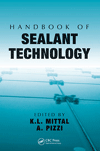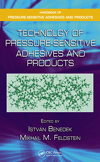The Benefits of Pigging in Adhesive and Sealant Manufacturing
From increasing yields and capacity, to lowering costs and improving environmental sustainability, the use of modern liquid product recovery technology is set to increase in sealant and adhesive manufacturing.

Image courtesy of Vladimir Zapletin / iStock / Getty Images Plus from Getty Images.
Liquid product recovery technology, more commonly referred to as “pigging,” is in wide use by companies that process liquids. These include companies that manufacture foods, confectionery, and beverages to those that produce paints, coatings, chemicals, household and homecare liquids, cosmetics, and personal care products, and just about everything in between. Pigging is also used in the manufacture of sealants and adhesives, but arguably less so than many other sectors.
Why Use Pigging?
Companies use pigging to:
- Increase their product yields and capacity;
- Speed up the product changeover process;
- Lower contamination and cross-contamination risks;
- Save energy;
- Reduce the use of water, solvents and cleaning chemicals;
- Create less effluent; and
- Improve their environmental sustainability.
Pigging is also an easy and quick way for adhesive and sealant manufacturers to lower their carbon footprint.
A recent report by UK-based sustainability and energy consultancy Carbon-Zero1 found that pigging systems reduce carbon emissions by over 2 tonnes every time a manufacturer changes from one product to another. This is based on the manufacture of solvent-based paint; however, the principle is much the same no matter what products are being “pigged.”
Many companies use pigging because it can eliminate the need for dedicated lines. As manufacturers are under pressure to produce greater varieties of product, the increased speed of product changeovers provided by pigging systems enables the same line to be shared by different product formulas.
What Is Pigging?
Pigging is a highly efficient method of recovering liquid product left in pipelines. Usually performed when changing over from transferring one product or batch to a different one, the recovered product can be packed, stored, or sent to the next stage of the process just like the rest of the batch. That’s because it’s in exactly the same condition as the rest of the product being transferred. If the product wasn’t pigged, it’s likely that it would be downgraded or discarded – sent to waste as effluent created during the CiP or flushing cycles.
How Does Pigging Work?
While the production processes of different products vary considerably, the principle and application of pigging, no matter what the process, remains fundamentally the same. That is, a specialist projectile (the pig) is propelled through a pipe, usually during batch changeovers. The pig will have a strong interference fit and recovers nearly all the product that remains in the pipe. So instead of going to waste, the recovered product can continue to be processed, packed, used, or sold.
Propellants are used to move the pig through the pipe. The type of propellant used depends on the plant, process, and product. The most common propellant is filtered compressed air, but it can also be nitrogen, carbon dioxide, water or sometimes even the next batch of product.
Where there are multiple product sources, lines, destinations, and drop-off points, so there are different pigging sequences. Sometimes more than one pig is used in the process. However, nearly all modern pigging systems are automated. Automation ensures optimal performance in terms of speed and efficiency. Automated systems are also safer and less prone to operator error.
Most pigging systems, for hygienic, efficiency, and safety reasons, are generally “closed.” That is, other than for inspection and maintenance, the pig or pigs are permanently housed within the system and rarely removed. Pigs are nearly always housed in a specialist launch housing and are offline during the normal transfer process. This means that the pig can quickly undergo CiP while in the launch housing and, in adhesive and sealant manufacture for example, avoid any hardening of the product on or around it.

Pig launch housing plus pipe.
Pig Detection
To enable automation, the pig itself must be detectable. This is usually achieved using some form of magnetization within the pig. For safety however, it’s preferable to avoid using pigs that contain solid magnets, simply because solid magnets can break or shatter, potentially contaminating any batch of product or, worse still, escape from the line and cause injury. The safer forms of pigs have a flexible magnetic core.
Detection systems vary, from basic reed switches to specialist pig detectors such as AccuTects, which have highly visual indication as well as ultra-reliable signals specially designed for accuracy and control by PLC or other control system.
Pig detectors are usually non-intrusive and placed at strategic points along the line. In the simplest systems, they’ll be located at the launch-and-receive stations. As systems grow in complexity, pig detectors can be included at drop-off points, junctions, and so on – any location in the system where the control system needs to know that the pig has either arrived or is no longer present.

Pig detector on a receiving station.
The control system automatically controls the sequence of the various valves, pig launchers, pumps, ventilation, depressurizations, and safety features. So, operator intervention is minimal. One thing that does vary between products and processes is the type of pig used.

Pigging system control panel
Pigging in Adhesive and Sealant Manufacture
The main ROI from pigging systems usually comes from recovered product. Pigging is most beneficial to companies when the cost of the product being transferred is high, or the product is fairly viscous, or there are long pipe runs (and therefore large volumes of product left in the pipe before changeovers). In other words, the more valuable the product, the thicker it is, or the greater amount of product there is to be recovered, the better the ROI from pigging.
Similarly, pigging is beneficial if there are multiple or frequent batch changeovers. The more changeovers there are, the more product is lost if it’s not pigged.
Companies that are limited in their use of water, are close to reaching effluent limits, or want to reduce their use of CiP chemicals or solvents, also have a lot to gain from pigging.
Related to this, as well as the initial cost of solvents, if storage, treatment, disposal, or transport costs are high, pigging makes a lot of sense because it can massively reduce the amount of waste or effluent created.
It can take a high volume of cleaning agents, such as solvents or detergents, to clean adhesive and sealant lines. The amount can work out to be the equivalent of several volumes of the pipe length. While the volumes needed are usually calculated and the line tested for cleanliness at the end of the cycle, sometimes there’s a temptation for operators to over flush, just to be on the safe side. This results in far more cleaning agents than necessary being used. It also uses more time than necessary. Using pigging, the amount of flush and CiP chemicals or solvents used to clean the line can be accurately measured. This avoids over-flushing, saves chemicals, and also saves time.
Types of Pig
Pigs designed for use in hygienic environments, for example for use with food and beverages, may be suitable for use with other products such as water-based paints or sealants. However, where solvents, high temperatures, or aggressive chemicals are involved, a solvent-resistant type of pig is more likely to be used.
There are a wide variety of pigs available on the market. However, the best performing and most efficient pigs tend to be bi-directional, of a one-piece flexible design, are able to travel around 1.5 D bends while maintaining full product recovery rates, and generally don’t have fins or complex shape profiles. This is because fins or protrusions can rip or tear, and sometimes product can build up behind the fins or where there’s a sudden change in profile of the pig.
 Image of a pig
Image of a pig
Pigging in Sealant and Adhesive Manufacture
Pigging systems are often incorporated into existing plants, but also as part of the design of new systems. While pigging is commonplace in hygienic and industrial processes, it’s less so in adhesives and sealants. There are a number of reasons for this, some valid, some less valid. There is a common misconception that it’s not possible to pig adhesives, especially solvent-based adhesives. Perhaps because there’s a school of thought that the pig may get stuck. However, just like pigging other solvent-based products, it’s often perfectly viable, and usually extremely profitable to pig adhesives.
The pigging process is fundamentally the same no matter what the product. The most important factor is choosing the correct type of pig. For example, solvent-based products need to be pigged using solvent-resistant pigs. More aggressive chemicals may need a different model of pig. Most process pigging companies will have more than one type of pig and be able to advise on the correct specification of pig for your product, based on your product data sheet.
Sealants and adhesives may need to be held at certain temperatures, and sometimes have to be kept moving to avoid solidification in the line. High temperatures may require key elements of the pigging system, such as launch-and-receive housings as well as the transfer line, to be jacketed. The pigging sequence itself may need to include additional cooling time or a cooling procedure in case the pig has expanded due to higher temperatures. But by using pigging, product is rapidly removed during product or batch changeovers (or at almost any stage of the process). This avoids problems associated with cooling or stationary product.
Sometimes there’s a misconception that adhesive products cannot be pigged because they are extremely viscous. However, there is also a saying in the process pigging industry, "If you can pump it, you can pig it!" The pressure needed to propel pigs is usually a similar pressure to that used to pump the product (a little higher but not usually significantly). So, as long as the liquid is able to be pumped through the pipe, it should be able to be pigged.
The occasional exceptions are highly aggressive chemicals, where the product is at extremely high temperatures, or it’s a non-liquid, granular, powdered, or dry product. Either way, it’s always worth talking to a process pigging specialist for advice and guidance on whether your product can be pigged or not; the chances are, it can be.
Types of Pigging Systems
There are different types of pigging systems, and the type selected depends on the process and key objectives.
Just about every plant or factory layout is different, so nearly all pigging systems are bespoke – designed around the specific requirements of individual clients and their needs, processes, aims, and objectives. There’s no such thing as an off-the-shelf pigging system, and neither should there be.
Single-pig systems are probably the most common type of system. This is where a pig is launched after the normal transfer process is completed, recovers product to the destination, and returns. The pig itself is cleaned during the flush or CiP process, and can speed up the CiP and flush processes by pigging as part of the cleaning sequence, removing CiP chemicals and flushing agents.
CiP processes and flushing are usually much quicker with pigging. This is simply because there is much less product left to remove from the pipe, so the cleaning processes require less chemicals and less flush and so are much faster.
Dual-pig systems are a relatively recent development. These allow a precise amount of solvent or cleaning agent to be held between two pigs (a “slug” of cleaning fluid if you like). The combination of pig–cleaning agent–pig both recovers product and cleans as the slug moves through the line. The slug can be refreshed for the return with either further cleaning agent or flushing agent. This provides fast cleaning and sanitization, while avoiding overuse of chemicals.
Either way, the costs of solvents and cleaning agents is expensive, so the less they are used, the better. What’s more, storage, treatment, disposal, and transport costs of effluent is also expensive, as well as not being great for environmental sustainability, so it’s best to create as little as possible in the first place.
High Return on Investment with Rapid Payback
The most common reason pigging is in wide use by companies that process liquids is because they provide a high return on investment with fast payback. It’s a strong business case. Usually, the cost of the system and installation is recouped within a few months. Cost of ownership is low, so after the initial payback it’s nearly all profit. Combine that with the other benefits delivered by pigging technology, it’s often an easy decision.
While the uptake in pigging technology has, arguably, been slow in the sealants and adhesives sector compared to say, food and beverages, as the importance of efficiency and productivity, along with the pressures on companies to improve their environmental sustainability and lower their carbon footprint increase, it’s certainly a technology we’re going to see more of.
For more about the benefits of pigging, visit www.hps-pigging.com/about-hps/benefits-of-pigging/. The Pigging Systems Carbon Footprint Reduction Report is available from www.hps-pigging.com/report-carbon-footprint-reduction/. Learn more about HPS Product Recovery Solutions at www.hps-pigging.com/.
Article images courtesy of HPS Product Recover Solutions.
References:
- Carbon Zero UK https://www.carbon-zero.uk/
Looking for a reprint of this article?
From high-res PDFs to custom plaques, order your copy today!









